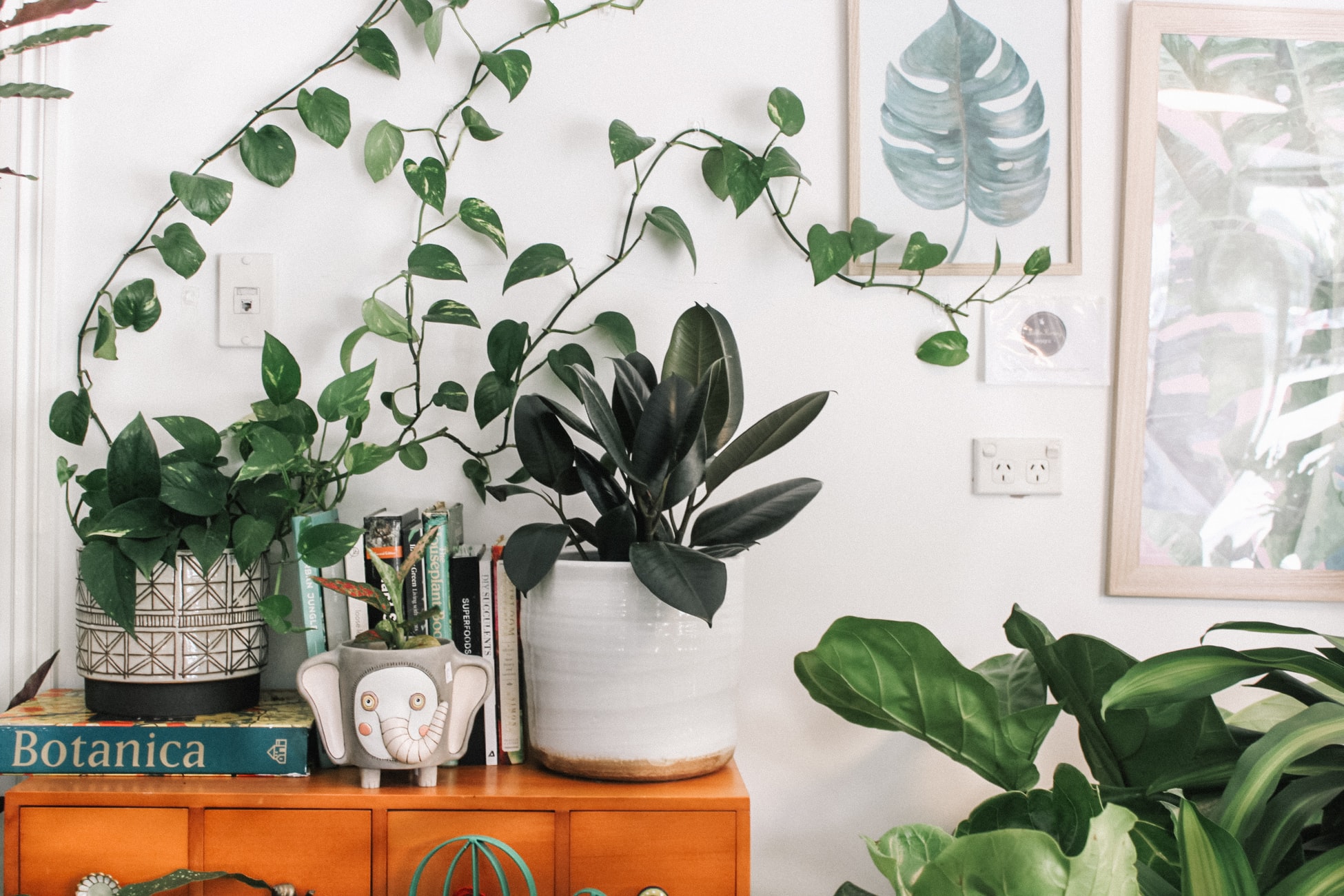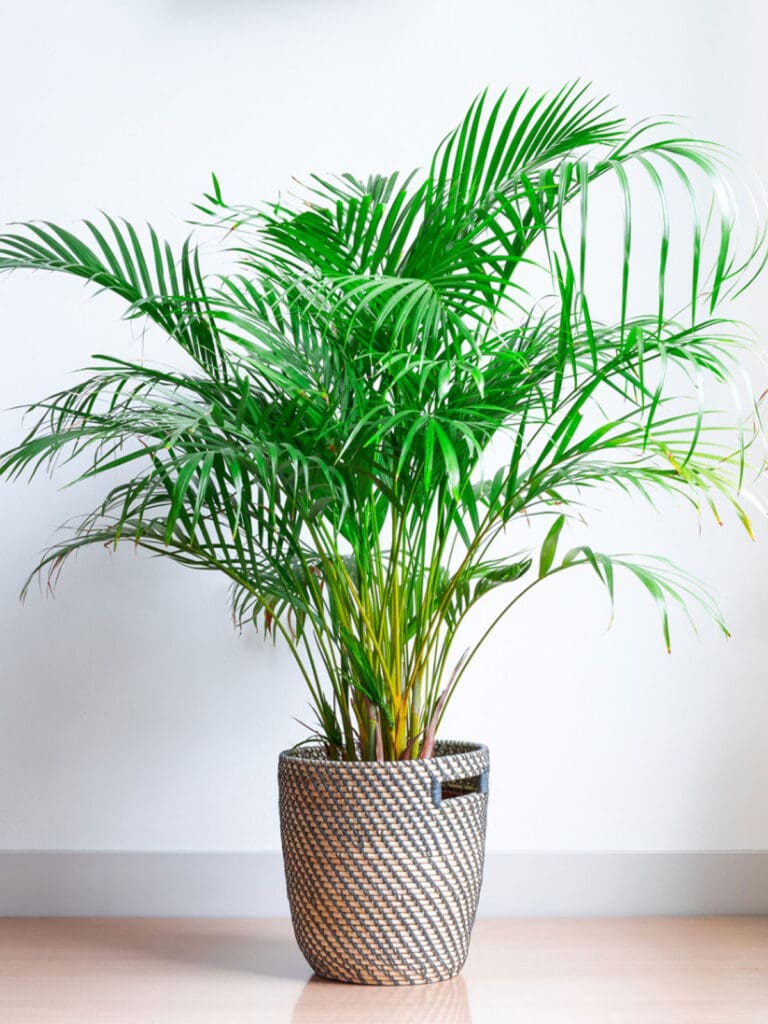Plants can have huge benefits for your skin, as long as you invest in the right ones. These are the 4 best indoor house plants for better air, skin and overall wellbeing.
This is your sign to become a house plant mum that will not only benefit rooms in your house, but also your body.
House plants may be your best investment ever due to their many benefits including cleaner air, better and increased sleep, as well as the aesthetic design they add to a room and the way they help anyone around them relax.
Another benefit is there are particular house plants that are great for the skin.
Snake Plants (Mother-in-laws Tongue)
One of the most common and easiest house plants to take care of, the snake plant acts as a natural air-purifier. Snake plants have the ability to produce oxygen at night as well as absorbing toxic air pollutants such as carbon dioxide, benzene, formaldehyde, xylene, and toluene – cancer-causing pollutants. During the day, clean air equals clean skin and better health.
How to care for them:
Snake plants are indestructible and one of the easiest plants to take care of, so the plant can be taken care of both indoor and outdoor. However, they thrive best in bright indirect sunlight. They do survive under shadier areas around the house, they’ll just grow slower. When watering, snake plants do suffer with overwatering and tend to get root rot if that does happen. Instead, let the soil dry out in between watering – it is recommended to water snake plants every 10 days.
Areca Palm
One of the few house plants which are pet-friendly, the Areca palm is perfect if you suffer from dry skin, and as winter is virtually here, this house plant may be the best one to purchase now. The Areca palm acts as a humidifier, not only for the face but the whole body and environment. It transpires water, as it needs a lot of water to grow and survive. The moisture the plant produces may help reduce the body’s need to heat up, decreasing dry skin.
How to care for them:
Unlike the snake plant, the Areca plant needs constant watering, every 3-5 days, but don’t let the soil be soggy. They also prefer areas which are partly shaded, but still need a good amount of indirect light to grow effectively. The Areca Palm is one of the few palms that can survive indoors for years, so care for them in order to keep by giving them right amount of light, preferably beside a south- or west-facing window.
Aloe Vera
Now, this plant is a given as Aloe Vera can be seen in many skincare products as a natural and effective ingredient. However, it’s also possible and safe to use the Aloe Vera gel directly from the plant onto the skin. For the skin, Aloe Vera can help reduce acne inflammation and treat burns. Aloe gel also has many health benefits including improved digestive health, increased oral health and healing when used and on canker sores, when it is rubbed on.
Here is a link showing how to harvest and cut out the Aloe gel from the plant: https://www.healthline.com/health/how-to-use-aloe-vera-plant#uses
How to care for them:
Aloe Vera plants are succulents, which means they live best in dry conditions, so water the plant every 2-3 weeks and even less during colder seasons – let the soil dry out completely before re-watering. Aloe plants need bright, indirect sunlight, and need to be rotated every few weeks for the plant to receive equal lighting.
Peace Lily
The Peace Lily plant lives up to its name as it’s an ideal bedroom plant which helps you peacefully fall asleep. This household friend increases humidity, protects the air from toxins, acetone vapours and mould spores, purifying the air. This helps anyone breathe easier as well as promoting restful sleep. As a result, these benefits can relieve stress mentally and physically by relaxing the mind and body.
How to care for them:
Peace lilies need to be consistently watered, ideally once a week, keeping the soil moist but not soaked. They also love humidity, so it is recommended to mist the plant every once in a while to keep this thriving environment, especially during warmer seasons. When it comes to sunlight, they prefer low indirect light – shaded or partly shaded, near a window, avoiding direct sunlight.






“Как работает лазерное удаление папиллом?” – “Лазер направляет сфокусированный луч света на папиллому, что вызывает нагревание и испарение пораженных тканей, не повреждая окружающую здоровую кожу.”
“How does laser removal of papillomas work?” – “The laser directs a focused beam of light at the papilloma, causing the affected tissue to heat and vaporize, without damaging the surrounding healthy skin.”
удалить папилломы лазером цена в москве [url=http://www.udalenie.com.ru]http://www.udalenie.com.ru[/url] .
Сколько стоит лазерное удаление бородавок в Москве?
Стоимость процедуры может варьироваться в зависимости от клиники, размера и количества бородавок. В среднем, цены на удаление одной бородавки варьируются от 500 до 3000 рублей. Например, удаление бородавок на лице может стоить до 3000 рублей за элемент, а массовое удаление до 10 бородавок может обойтись в 550 рублей за единицу.
How much does laser removal of warts cost in Moscow?
The cost of the procedure can vary depending on the clinic, the size, and the number of warts. On average, prices for removing one wart range from 500 to 3000 rubles. For example, removing warts on the face can cost up to 3000 rubles per element, while mass removal of up to 10 warts can cost 550 rubles per unit.
как избавиться от бородавки на пальце руки [url=https://epilstudio.ru/udalenie-borodavok/]как избавиться от бородавки на пальце руки[/url] .
Our site [url=https://coinomiwallet.io]Coinomi Security[/url]